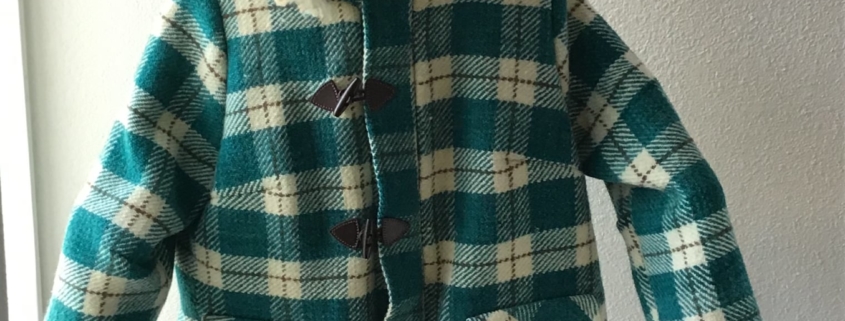The Story of a Coat
words and photos by Rebecca Harkins
The pandemic gave me the perfect opportunity to achieve a lifelong dream to make my own wool shirt. Since I raise sheep and have a lot of fiber available to spin, I decided to use handspun wool.
The first thing to decide was what the fabric design would be. My dream shirt just had to be plaid. I wanted a simple pattern with larger blocks of color and I wanted to use what I already had. I had a beautiful natural chocolate brown Shetland roving and a large quantity of white roving available. I also had a huge tub of teal dye (when calculating how much dye to order for a project, decimal points really matter). Since I didn’t want the shirt to end up too dark, I decided to also include white in the fabric design. These 3 colors went into the plaid I designed for the shirt.
Once the colors, fabric design, and fabric pattern were chosen, it was time to figure out how much fiber I would need. This involved much discussion, several napkins and notebooks, several phone calls and emails to friends to check my math, stopping to spin, weave, full asample, and finally adjust my calculations yet again. I do think rocket science would be easier. Nervous, I decided to add an error rate to my calculations so I would spin enough to make some extra fabric. Besides, who wouldn’t like extra custom-made wool fabric?
With calculations done, I prepared all of my fiber and set to spinning on my Kromski Symphony wheel. I chose to ply my yarn to make a stronger yarn for weaving. Over the next two months, the mountain of finished skeins grew and grew. I kept a tally of the yardage of each skein as I completed it so I could track my progress towards my goal. My Symphony is a real workhorse, so each skein took an average of 1 hour 35 minutes to spin. It took an average of 44 minutes to ply and skein each ball. All told I spun 13,095 yards or 7.44 miles of 2-ply yarn. My wraps per inch (WPI) for the plied yarn was 22.
With the spinning all done, it was time to dye. The brown would stay as it was, but I needed to dye just slightly more than half of the white to teal. My dyepot could hold two skeins of yarn and I had nineteen skeins to do.
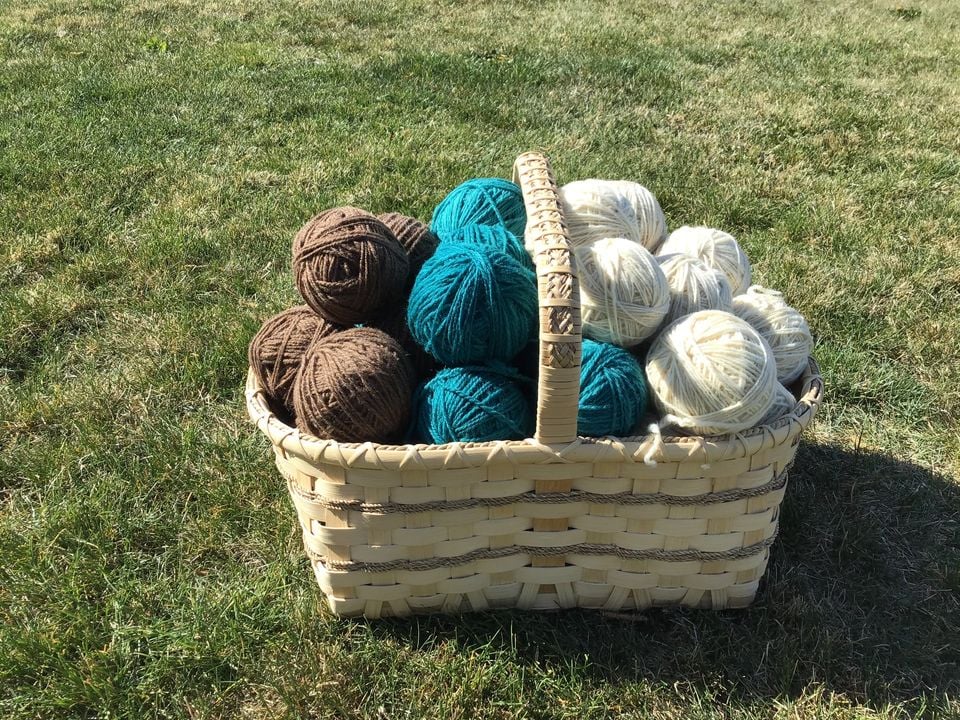
The next step was to warp the loom. My loom is a Paxton 4-shaft floor loom. As I was warping, I deliberately mixed up the different dye lots, using one strand of this dye lot and the next strand another dye lot to disguise any dye lot differences. This blending worked astonishingly well and added a beautiful depth to the teal. My loom has a sectional beam allowing me to warp in 1-inch segments, which were then put on the loom.
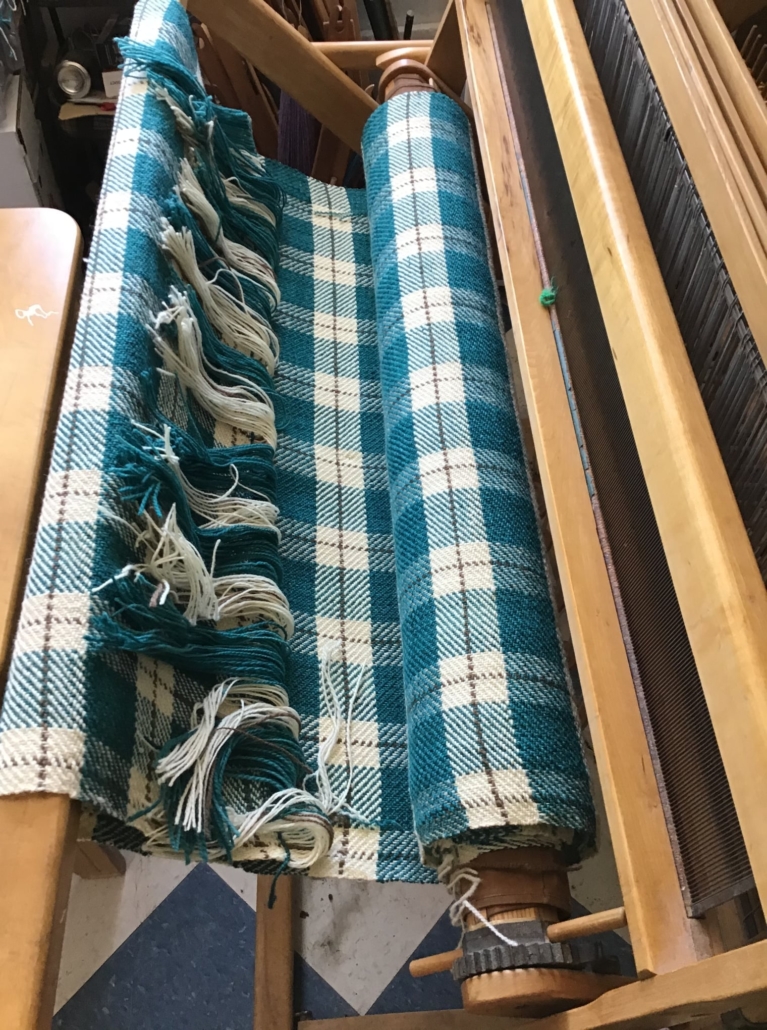
Once the cloth was woven, it needed to be fulled. Fulling is the process of felting or partially felting wool fabric to make it more stable. This process wasa lot of work as I chose to do the feltingby hand because I was concerned the machine would felt thefabric into a ball. This process is done by wetting the fabric with soap and water and squishing and rubbing it repeatedly to make it felt. In total the squish and rub process took 5 hours.
Once I thought it was felted sufficiently, I sewed it onto a wooden frame under tension to dry. I had done some research about the historical fabric finishing techniques and found that fabrics were stretched and hooked onto a frame and left to dry. I had a frame made to fit my fabric and stitched the fabric to the frame (instead of hooks) to stretch the fabric while it dried. The frame allowed me to lean the whole piece against the wall, protecting it from accidentally being walked on as it was laid out to dry. This took 2 hours! The whole fullingprocess would have been more fun with friends like the “waulking the wool” parties depicted in Outlander. Darn the pandemic.
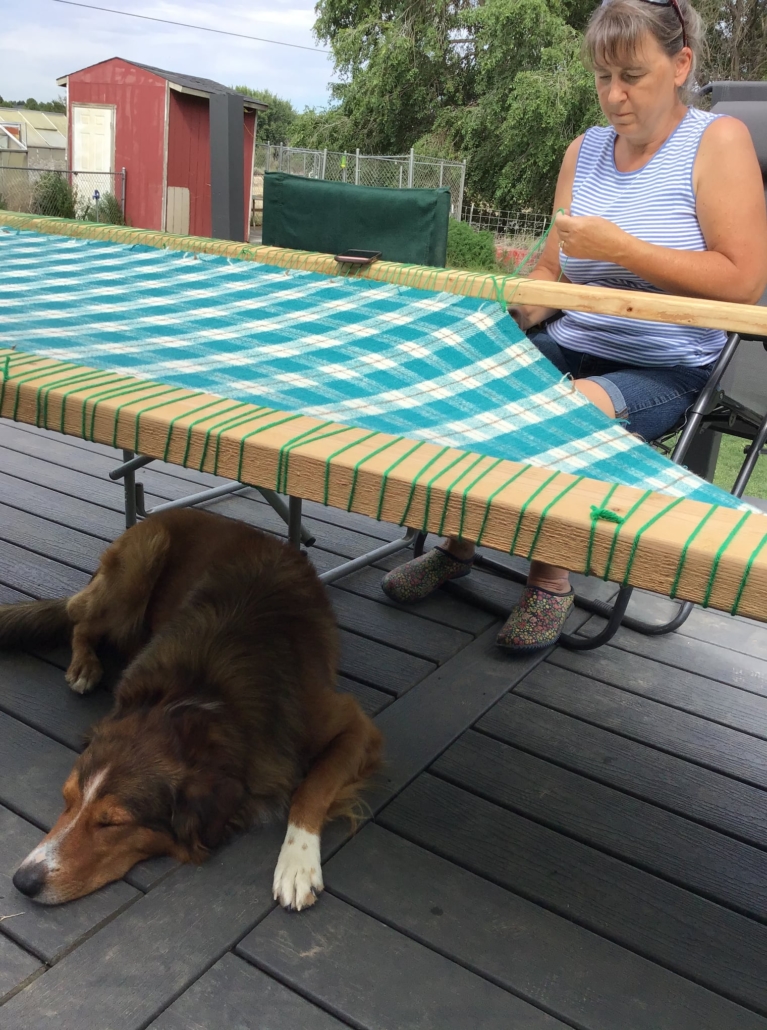
When the fabric had dried, I discovered it was thicker than planned. This meant it was much too thick to be made into a shirt. I then had to rethink my project and started looking at different patterns. I decided the heavy fabric would work very nicely for a cozy winter parka, so I found a pattern to use. Before I could cut the fabric, I had to assemble the pattern; it took me 2 hours to tape together the sheets and cut out the pieces. I was then ready to pin the pieces to the fabric. Since the fabric was a plaid, it was necessary to take extra care to make sure the plaid lines all matched up on the different pieces. If the plaid lines were not matched properly, it would be very obvious in the finished jacket. This took extra time as I had to pin the layers of the fabric together, aligning the plaid lines in the separate layers. Then I carefully placed the pattern pieces. Once the outer fabric of the jacket was cut, I pinned and cut out the silk fabric for the lining.
Once all the pattern pieces were ready (both outer fabric and lining), it was time to start assembling the coat. I learned a lot about sewing this project and how to do things I had never done before. The biggest thing I learned how to do was match plaids around the coat. This was a real challenge and required a lot of double checking that I’d done it right. I also learned that lightweight silk fabric is no fun to work with and when in doubt pin more until you run out of pins. My favorite thing I learned was how to do inset pockets correctly. I love that they are completely finished and they are wonderful to use. The coat was hand finished by hemming and sewing on toggle buttons. Once all the machine sewing was completed, the coat was pressed.
To finish the hood, I wove a faux fur band on an Inkle loom with 100 percent wool yarn. The fur is made from 100 percent Romney wool locks shorn from my flock that were hand knotted into the weaving. This makes a very durable but flexible band that is finished so it can be sewn onto the hood. For washing, this will be removed and washed separately if needed.
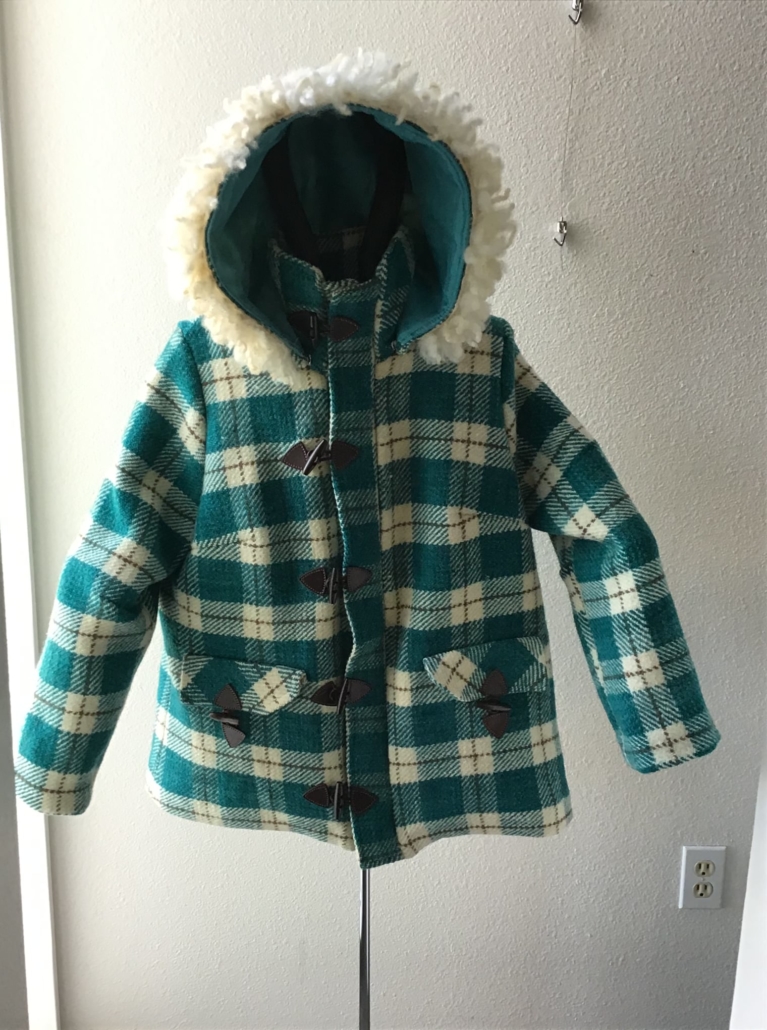
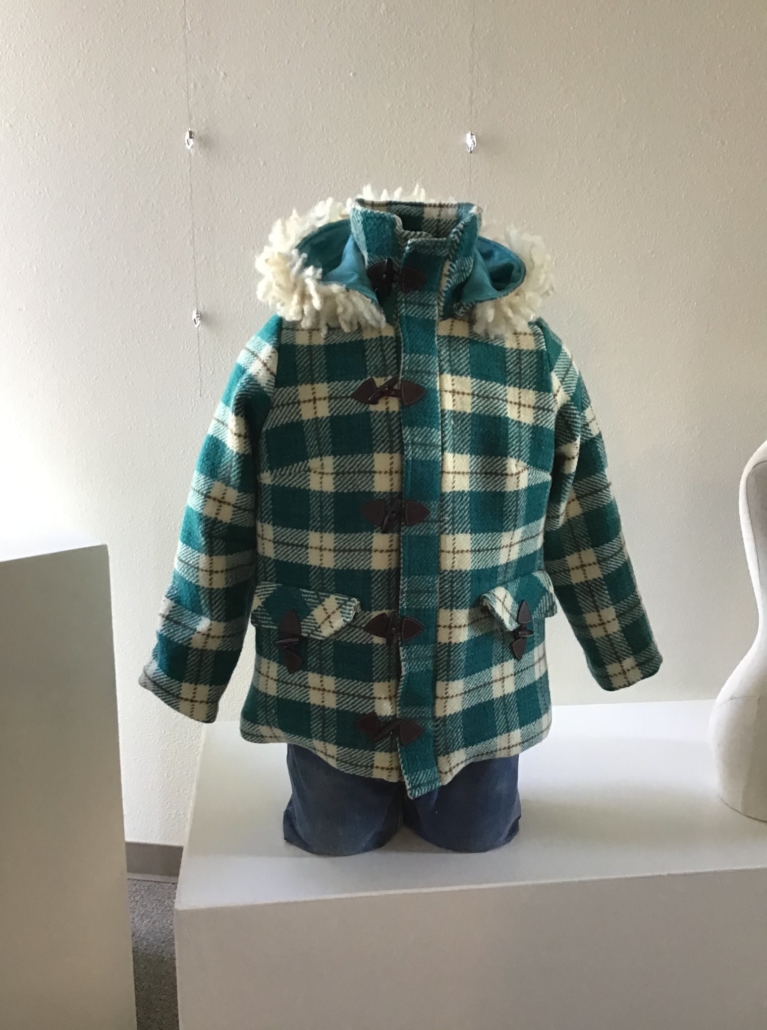
Over the course of this project I kept track of the hours I spent planning, spinning, dyeing, warping, weaving, fulling, and sewing. All together, I put just over 222 hours into this project! I used over 13,000 yards of yarn and made and used 5.25 yards of fabric.
Even though I didn’t end up with what I had planned at the start of my adventure, it was an amazing process. I learned a lot starting the project right from the basic materials. My advice to others;don’t be afraid of big projects. Enjoy the process. Be flexible in your plans; sometimes things just don’t work out as planned. And finally, be excited to stretch yourself and your skills.
Rebecca Harkins is a fiber artist and shepherd with more than 15 years experience. She raises Romneys and Merinos and enjoys using their wool in her work. She also enjoys teaching and writing about fiber arts. She dyes, spins, felts, and weaves the wool from her sheep, making beautiful tapestries, afghans, and garments.
PLY Magazine believes that Black lives matter, as well as LBGTQI+ lives. Those most vulnerable and persecuted in our communities deserve our love and support. Please be good to each other.
Did you know we also have a monthly PLY newsletter? Sign up here!
Did you know we also have a monthly PLY newsletter? Sign up here!

